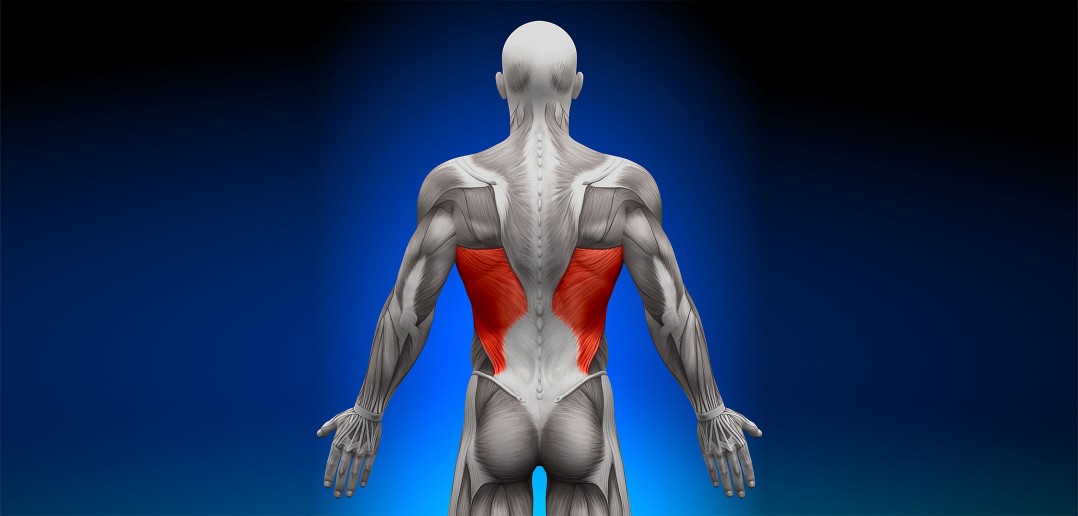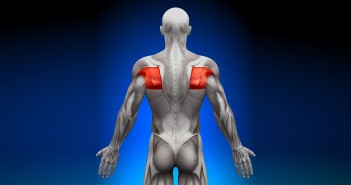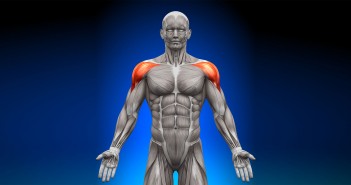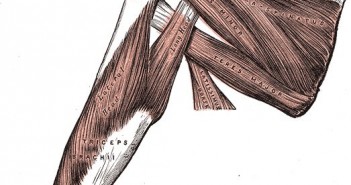The latissimus dorsi is the widest and most powerful muscle of the back.
The latissimus dorsi muscle consists of a pair of large, flat, triangular muscle covering the lower back. They are commonly known as the lats.
The action of the latissimus dorsi draws the upper arm downwards and backwards and rotates it inwards, and plays an important role in both the backswing and in powering the downswing.
The latissimi arise from the lower half of the vertebral column and iliac crest (hipbone) and taper to a rounded tendon inserted at (attached to) the front of the upper part of the humerus (upper-arm bone) near its upper end just beneath the shoulder.
The Role of the Lats in the Golf Swing
When you swing efficiently, the lats play a key role in powering the golf swing.
Towards the end of the backswing (or upswing), you coil your body, stretching the left (target side) latissimus dorsi (together with the infraspinatus, rhomboids, obliques, and multifidi), elongating them and building enormous potential power.
Latissimus dorsi range of motion is crucial for a correct golf swing, if it is limited then the club will be out of position at the top of the backswing, resulting in compensations, inneficient swing mechanics, loss of power, inconsistent ball striking, and potential for injury.
The latissimus dorsi has the largest surface area of any muscle, and it is capable of producing tremendous power. By stretching it in the backswing and then quickly shortening it in the downswing, the latissimus dorsi transfers and amplifies power up the kinetic chain from the hips to the upper body.
In the downswing, the left (target side) latissimus dorsi also helps to pull you onto your left side, rotating your torso, and balancing the force generated by the pectoral muscles (pecs) on both sides of your body.
For more information on how the latissimus dorsi helps the right arm to transfer energy to the golf club in the downswing, see The Role of the Right Arm in the Golf Downswing.
By maintaining proper posture and keeping your shoulder blades pulled in, towards your spine and away from your ear, your shoulder complex is positioned for proper functioning of the latissimus dorsi, enabling it to pull you over your left (target side) leg coming into impact. This, in turn, helps you to drive your legs into the ground more efficiently, combining to produce greater club head speed. If you don’t control your left (target side) shoulder properly, it will lift towards your ear at the beginning of the downswing, which prevents you shifting over to your left side properly, greatly reducing efficiency and power, and putting enormous stress on your lower back as you “hang back” on your right side through impact.
In the follow-through, the right latissimus dorsi and the muscles that stabilise the right shoulder (serratus anterior, rhomboids, levator scapulae), as well as the rotator cuff (supraspinatus, infraspinatus, teres minor, subscapularis), help to protect the shoulder joint from reaching the end of its range of motion under high velocity.
If you have any questions or comments about this or other articles on Golf Loopy, please send us an email.
You May Also Like…
Overview of a Great Golf Swing, which summarises the correct movements in a great golf swing.
Golf Swing 101. Setup: Basic Posture
Golf Swing Drill 101. Setup: Perfect Posture and Connecting to Your Core, which describes how to achieve perfect posture.
Why is Having the Shoulders “Connected” So Important?
The Role of the Right Arm in the Golf Downswing, which describes how the latissimus dorsi helps the right arm to transfer energy to the golf club in the downswing.
Golf Anatomy and Kinesiology, a collection of articles describing the roles of the muscles involved in the golf swing.
Core muscles, which describes the muscles that run the length of your trunk and torso.
The Role of the Multifidi in the Golf Swing.
Oblique muscles, which describes in more detail your side abdominals, which help you to bend from the side or twist your torso, and their role in the golf swing.
Teres major muscle, which assists the latissimus dorsi in drawing the previously raised humerus (upper arm) downward and backward.
The Role of the Teres Minor in the Golf Swing.




